
The holidays can be a great time to loosen the reigns for a lot of people, but for those who find it hard to reach their goals, it might bring about additional anxiety. It can be easy to lose yourself in festive meals and fancy nostalgic treats so that you forget about balanced nutritious meals. If you’re worried about overindulging to the point it might affect your health goals then this article is here to help you make some choices that can keep your health harmonious over Christmas and New Year. A holistic approach to health considers every aspect of self, encompassing your physical, mental, emotional, social, and spiritual and recognizes the interconnected nature of these elements. Living holistically doesn’t have to be daunting, especially during the holiday season.
One fundamental aspect of holistic nutrition is stress and anxiety reduction so if any of the following suggestions feel overwhelming then remember that we can only do so much, habits and patterns are built over time. Some of the suggestions you may already do, others you might find impossible and that’s ok. It’s about picking what works for you, especially at this time of year when things can become stressful. A holistic approach to health and lifestyle allows us to begin to see habits and patterns that might be determents to our health. You may also become more aware of the interconnectedness of our bodily systems, our minds and our environment. We believe that this can lead to a greater understanding of our place in this world as a part of its holistic system. Perhaps a lesson to be learned from understanding this is how much impact we have on our immediate and global environment.
The term “mindfulness” was defined by Jon Kabat-Zinn as “paying attention in a particular way, on purpose, in the present moment, and non-judgmentally.” Although this should be something we consider every time we sit down to enjoy a meal, it is especially important around Christmas as we tend to overindulge. During the holidays Canadians’ food waste doubles, which makes sense as we buy so much more food, often much more than we need. This leads to overeating or not being able to eat leftovers because we’re either full or sick of the sight of certain foods. That’s why we believe mindful practices such as meditation or mindful eating work well around the holidays. A more considered approach towards eating allows us to assess whether we need 6 boxes of mince pies as opposed to 4. Or whether the last bite was enough before we ate the whole plate of buffet food.
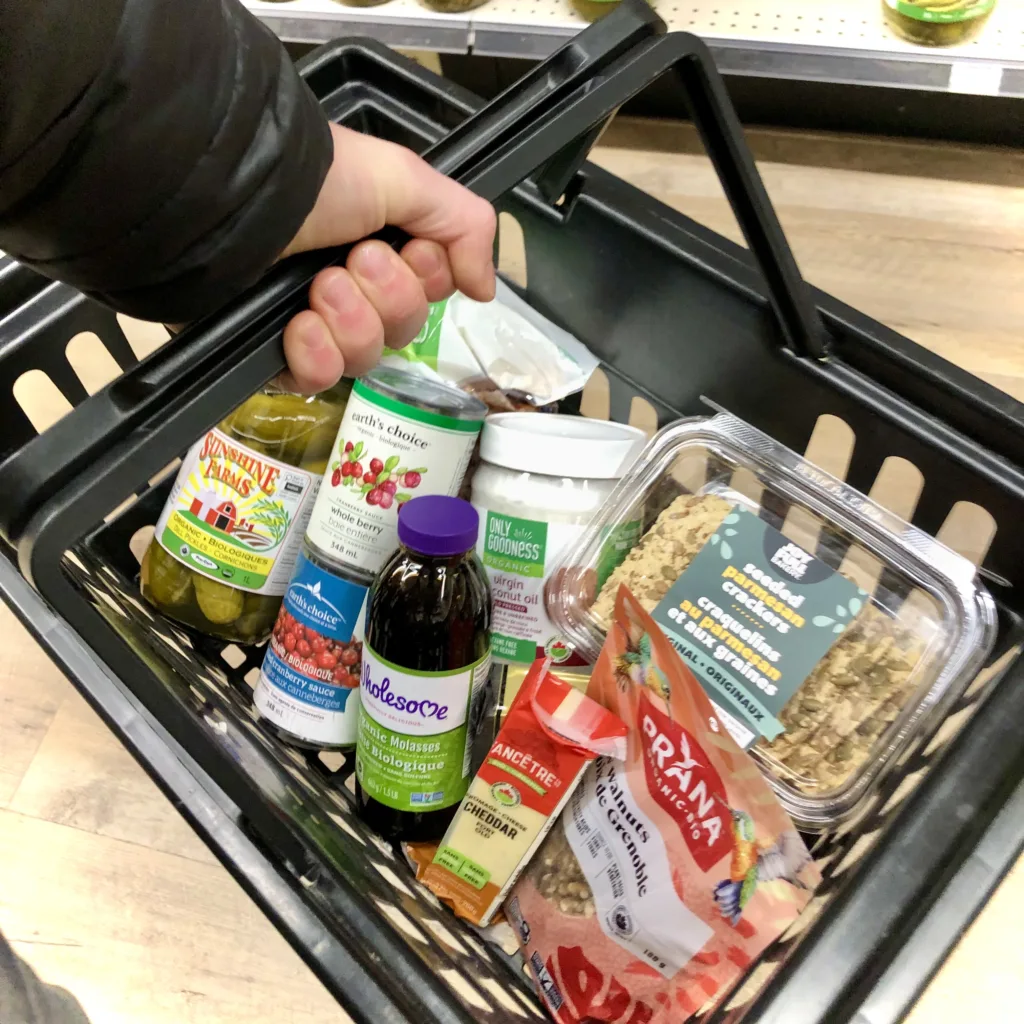
During meals take time to slow down and appreciate where your food comes from, how long it takes to grow or produce and how it reaches your plate. Savour the tastes, chew slowly and relish the experience. Oftentimes times we eat so quickly that we often don’t get the message from our stomachs that we are full until it’s too late. At that point, we’ve already started to fall into our post-meal food coma. Many cultures around the world tend to follow the 80% full rule, never reaching an uncomfortably full state; this can also help with blood sugar regulation.
Mindful eating (i.e., paying attention to our food, on purpose, moment by moment, without judgment) is an approach to food that focuses on individuals’ sensual awareness of the food and their experience of the food. It has little to do with calories, carbohydrates, fat, or protein (PMID: 28848310), so it can be an effective way of reducing food diet-centred anxiety.
Being mindful can start in the grocery store, do you need the four boxes of cookies? Will two do? What happens to that plastic packaging once I’ve thrown it in the garbage? This is not a method of making yourself feel guilty because we should all enjoy things that make us happy but a few contemplative and objective moments can allow you to see with wider clarity.
Coming together to enjoy food and celebrate is a great way to connect with loved ones, so we must enjoy those moments without feeling guilty. Paying more attention to when, how and what you eat can allow you to listen to your body’s natural hunger cues. The relationship between food and emotions is a complex one so it’s important to approach this time of year with a non-judgemental attitude towards yourself and others. Furthermore when you’re more aware you’re more likely to enjoy and savour every bite. If you do experience extra anxiety around food this time of year feel free to connect with us for free so we can guide you in the direction of some things that might help. Remember not all food has to be highly nutritious and aligned with your current eating habits and health plan, it’s ok to enjoy food as food, as an experience of joy.
Another tip that can help with mindful eating is to physically sit down and eat at a table with as few distractions as possible (including your phone or the TV). This allows you to be more aware of how much food you’re consuming. With distractions we often find ourselves loading our mouths with food without even noticing. This way you may find eating becomes a very fulfilling and interesting experience. This may be difficult at parties as buffet-style foods, bowls of snacks and canapé boards are bountifully displayed on every available surface and temptations to continually graze become high. But don’t worry too much if you can’t sit to dine as you can still have a very present dining experience another way. Try taking five deep slow breaths before you begin eating then chew food slowly, try to taste the different ingredients and flavour combinations, and talk about the sensations with the people around you helping them draw their attention closer inwards towards the experience. This in turn can cultivate a different relationship with food. You’ll be less likely to overeat as you’ll be very aware of how much food you’ve consumed.
Remember it’s okay to indulge in foods that you wouldn’t usually eat throughout the year but be mindful of how much. Some things only happen during the holidays such as a glass of scotch with your Dad or the Christmas cake your grandmother makes. Enjoy these moments. Total absence from foods you enjoy can lead to negative emotions and restricted eating patterns are now known to lead to eating disorders. So don’t be hard on yourself, but be aware of the health consequences that overeating certain foods can have after a prolonged amount of time.

Cognitive and physical health shouldn’t take a back seat during the holidays. It’s probably even more important for them to be supported during the winter months. Due to frequently overcast skies and shorter daylight hours, there is less naturally occurring immune-supporting vitamin D available. So during the holiday season, your immune system may become compromised due to lack of sufficient support. The same applies to your circadian rhythms (sleep-wake cycle) due to hypothalamic-pituitary-adrenal (HPA) axis dysregulation. Holiday foods tend to be less nutrient-dense, filling yourself up on processed foods doesn’t leave room for foods high in fibre or protein, so gut dysbiosis may increase resulting in uncomfortable digestive issues such as bloating and imbalances in other bodily systems.
Indulging in excess food during the Christmas and New Year seasons is a common habit that can be difficult to change. On Christmas day, for instance, individuals may consume up to 6000 calories, (PMID: 37836485). Numerous factors contribute to alterations in eating habits during the holidays, such as societal expectations, numerous gatherings with family and friends, and the inclination to display a positive material status. Individuals tend to consume significantly more food in 24 hours than they would typically, often motivated by the intention to begin the new year with a fresh and healthy lifestyle (PMID: 37836485). We suggest keeping a healthy foundation throughout the season so as not to start your goals on a back foot. Don’t dismiss your targets completely. Oftentimes times people will reassess their goals or fail to meet them because they expected too much change and particular unachievable goals too soon. If you start slow and aim for small weekly increments and manageable goals by starting before January, you’re a lot more likely to set yourself up for success. Don’t give yourself a disadvantage by taking backward steps, keep a consistent baseline even through the off-season, you’ll find it a lot easier to get back on track.
Finding more nutritious versions of your holiday favourites is a great option to pack more vitamins, minerals and fibre into your classic meals. One favourite switch of ours is to substitute dark chocolate (at least 70% cocoa) for milk chocolate. Dark chocolate is rich in antioxidants and minerals, such as copper and magnesium, which are essential for muscle and nervous system function, and could potentially lead to mood regulation. More specifically, magnesium acts on your muscular system to relax and soothe. Adding fresh or frozen berries to desserts can boost their vitamin C and antioxidant properties. Switching some dips that usually use heavy cream, cream Fraiche or ranch-style dressings for Greek yogurt instead allows you to add more calcium, less saturated fat and more protein to some dishes. Switching to kombucha, water kefir or coconut water can be a healthy alternative to alcoholic drinks. These are also lower in calories and additional sugars so could prevent excess weight gain (and hangover!). Try adding seasonal greens such as kale and other brassicas such as brussell sprouts to dishes for added fibre, vitamin C, folate, calcium and vitamin K. Complex carbohydrates can help boost serotonin levels so try adding sweet potatoes and oatmeal to your diet over the festive period. As a neurotransmitter, serotonin interacts with melatonin to help control when you sleep and wake up, therefore assisting in keeping your circadian rhythm and mood regulated.
For brain health try adding in healthy fats that supply high amounts of omega-3 fatty acids. Adding nuts and seeds, such as walnuts, or oily fish, such as smoked salmon, to your cheese board is an easy way to do this. A cheese board or platter is also a great opportunity to add nutrient-dense fruits and veggies to your snacking regime. As mentioned before immune system support should be a main focus as chances of catching a cold or flu are a lot higher. Often the most overlooked but common deficiency in the northern hemisphere is Vitamin D, which is known to be one of the most important hormones for immune function. Unfortunately, vitamin D cannot be found in many non-fortified foods and absorption from ones that do contain it, such as mushrooms, can be low due to poor digestive system efficiency. Supplementation is therefore often recommended (read more in the ‘Supplements’ section below). Fortunately, other compounds can give your immune system additional support during peak cold and flu season; meat and some vegetables and seeds are high in zinc, which has been shown to be ‘crucial for normal development and function of cells mediating innate immunity, neutrophils, and NK cells’ (PMID: 18385818). Its absorbability is increased when consumed with protein, so another reason to keep your protein intake high even during the holidays. For vegetarians, eggs are another great source and for vegans soybeans, lentils and pumpkin seeds are great as they contain fibre and protein too.
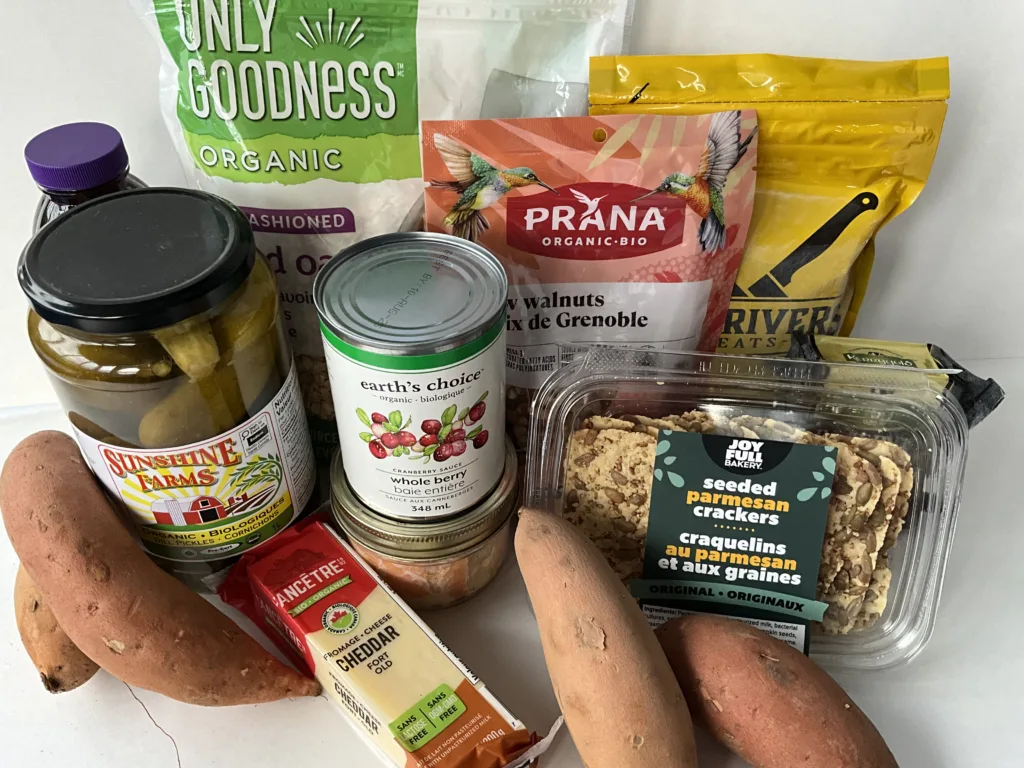
Bone broth can be crafted from the bones and tissues of various animals, such as cows, chickens, and even fish. It serves as a valuable source of essential nutrients, particularly minerals present in these tissues, making it a potentially advantageous dietary addition for many individuals. Bones are inherently packed with vitamins and minerals like calcium, magnesium, and phosphorous. In addition, when connective tissue is simmered into bone broth, the resulting liquid incorporates natural compounds from the cartilage. The inclusion of tissues and bones also introduces collagen, which, when cooked, transforms into gelatine. This process yields amino acids, the foundational components of proteins, providing the body with an additional nutritional benefit. Try making your Christmas dinner gravy with bone broth, rather than a packet of dried heavily processed instant gravy, which often contains preservatives and added sugars and is very high in sodium. There are many pre-made bone broth options available (Cleveland Meats is a great local source) if you don’t have time to do this yourself.
Consumption of meat and dairy during the festive period increases dramatically and, commonly, most people will select low-quality animal products either for financial reasons or not knowing about other alternatives. Turkey is a popular choice for most dinners while cheese boards make a great snack choice. Although in moderation both of these can be a great part of a healthy diet (turkey after all is high in serotonin-boosting tryptophan), it’s important to be aware of the quality of these products, their environmental impact and the impact on your bodily systems.
Mass-scale turkey farms, whose main aim is to raise turkeys for the holiday season, often treat their animals with little care. Hundreds of turkeys can be housed in large barns with next to no outside time and they are pumped with growth hormones, vaccines and antibiotics. The cows that produce cheese made from conventional dairy farms are very often treated the same. With our clients, we’ve seen that dairy allergies can subside when they switch to higher quality, organic and grass-fed dairy. One theory is that the allergy was a reaction to other factors like what the animal ate or was treated with, such as hormones used to increase lactation. These hormone-altering chemicals can make their way into your digestive system and may lead to detrimental health impacts such as hormonal imbalance and an increased chance of HPA axis dysregulation. These may be shown as symptoms such as mood swings, sudden weight gain, digestive discomfort, acne or a myriad of other symptoms. One way to mitigate this is to purchase turkey from small-scale local farms, which often take a stronger approach to greater animal welfare standards and aim to raise their animals more naturally and sustainably. Another is to purchase less meat (see food waste section above) and enjoy quality over quantity, especially if price is an issue.
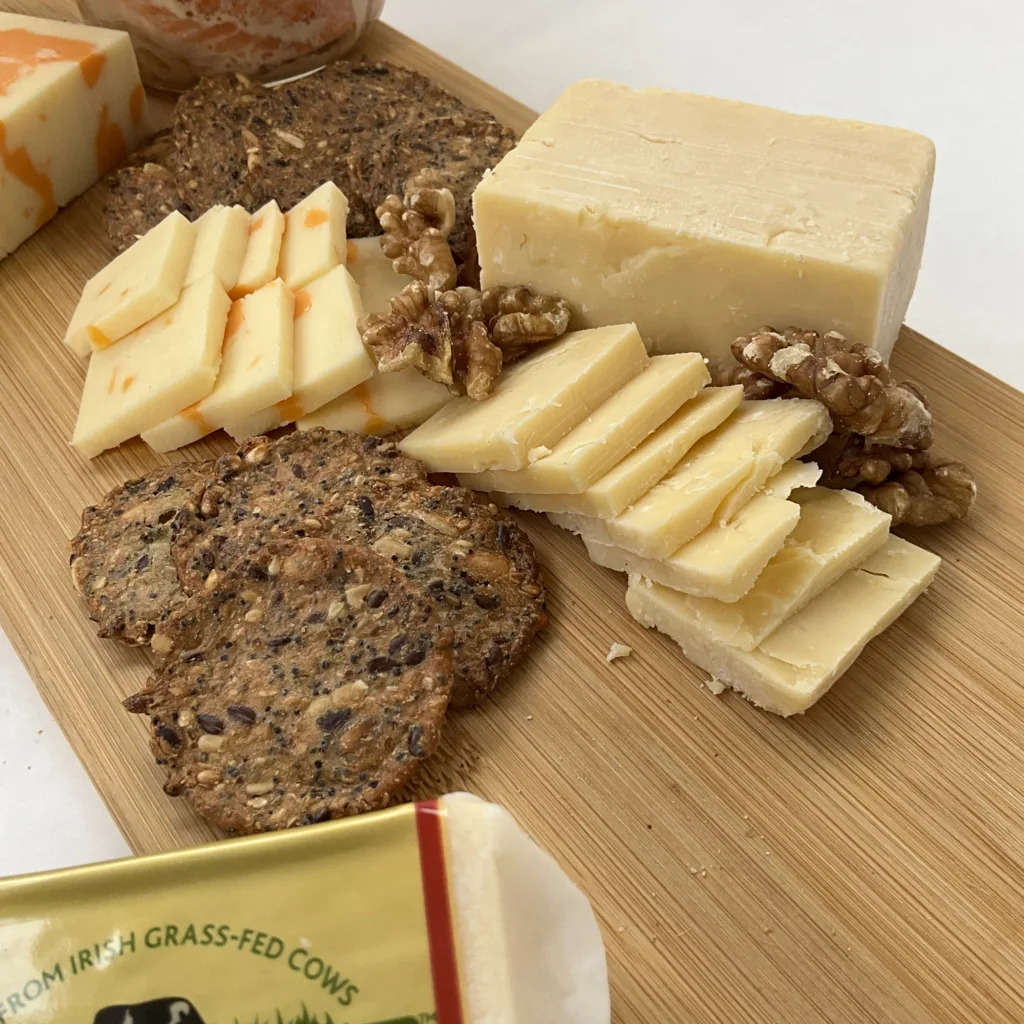

Red meat is incredibly nutrient-dense; it’s high in protein, zinc and B vitamins. Lean red meats such as venison, bison, elk and grass-fed beef are all lower in fat and higher in inflammation-fighting omega-3 essential fatty acids (PMID: 16500874). Remember though: a little goes a long way. Try a small amount of a more expensive cut to experience the taste and health benefits. A third option is to reach for a selection of meats by switching up your choices, try chicken, beef, lamb and pork all from small-scale, pasture-raised farms, this avoids putting more money into large-scale conventional farming but still allows you to enjoy nutritionally dense protein sources over the holiday period. Buying local also decreases the distance your food has to travel therefore lowering emissions and pollution. See our post about protein for more information about the benefits of protein in the diet.
For vegetarians aim to create your own tasty meat alternatives, such as nut roasts, or simply embrace the no-meat life by adding more fibre-dense nutritious veggies to your plate or, if it’s not against your ethical standpoint, try locally caught wild fish such as salmon or halibut. Something to note for those who may be tempted to reach for processed meat alternatives (such as Beyond Meat) is to check the label for the list of ingredients; chances are there are at least ten. Where did they come from and at what cost to the local environment? Each ingredient is shipped from a different location, often thousands of miles away. They are also loaded with seed oils, sugars and other fillers and binders which, over time, could become detrimental to your health if consumed regularly.
Garbage or compost? Living room floors on Christmas morning very quickly become strewn with wrapping paper mostly torn into so many pieces it can’t be used again. You tell yourself it only costs a dollar per roll so I’ll just put it in the garbage and buy more next year. But where does it go from there? Sometimes in the garbage and sometimes in the blue bin, and often it’s coated in plastic or shiny foil so can’t necessarily be composted or even recycled. Christmas has been labelled as ‘the largest annual environmental catastrophe globally,’ as our collective actions contribute significantly to pollution and waste. According to the website commercialwaste.com, it is estimated that during the holiday season, some families spend 60% more of their incomes and produce 30% more household waste. This includes a substantial amount of holiday-related items such as food waste, ribbons, bows, packaging, shopping bags, and wrapping paper, adding an extra 1 million tons per week to landfills.

To diminish the volume of wrapping paper ending up in landfills, consider using biodegradable options like paper, hessian, or cloth for gift wrapping. Most brown paper is both recyclable and compostable, undergoing minimal chemical treatments during production due to being unbleached. Additionally, you can add a creative touch to packaging by using colourful pages from newspapers or magazines or reusing wrapping paper and gift bags you already possess.
Explore the idea of homemade gifts, such as baked cookies, bread, jams, or a plant, which generate minimal waste. Consider gifts like movie, theatre, or concert tickets, dinner at a restaurant—ones that do not create any waste at all. Another option is gifts that can be fully consumed, like handmade candles, soaps, or seeds for next year’s garden.
Avoid plastic decorations and opt for glass, wood, metal, and natural alternatives instead. Making your own natural or repurposed decorations can even become a fun activity. For holiday gatherings, use reusable plates, glasses, dishwater, and cutlery. Encourage friends and family to BYOC (bring your own cup) or find additional dishes and glasses at second-hand shops to supplement your existing collection, reducing overall waste.

Finding time to get movement in over the holidays can be difficult. Between family visits, later-than-usual bedtimes and possessing less energy during the day, your motivation can become very low. Firstly it’s important to highlight that small breaks from exercise can be beneficial for improved performance in the long run, It is great to let the muscles, tendons, ligaments and nervous system take time away from load and force to reset and recalibrate. We often recommend to our clients that a week of low-impact cardio or yoga or even just rest periodically is an essential part of your fitness journey. Giving your nervous and musculoskeletal systems time to down-regulate is vital if you work hard consistently. Remember that exercise although highly beneficial in numerous ways can be taxing to your system as your need for nutrients goes up, so does your need for sleep and cortisol management. If you’re sleeping less and consuming less nutrient-dense food to support your body then it could be a good idea to decrease intensity during the holidays. That being said, finding the balance between low motivation and not having the resources to exercise are different things. It’s a good idea to pay attention to your body cues. Overdoing exercise comes across as constantly sore muscles, increased frequency of contracting colds and flu, and a feeling of being ‘wired but tired’. Staying consistent can help with motivation; there will be days you won’t want to work out but should because it keeps your workouts as an ingrained habit. But there will also be days when you simply can’t and therefore shouldn’t or you might risk injury or illness. Over time you’ll begin to recognise the difference between the two.
However, if you’re not at a point in your training schedule where you feel you need a prolonged rest, then there are a few options to keep you moving over the holidays. One is to try group workouts with family members; you might find you all have strength in numbers, pushing each other or encouraging each other when motivation is low, or keeping each other accountable. This could be as simple as a small walk or run before or after dinner, ice skating, skiing or snowshoeing. Walking has a bonus as it has been shown that going for a slow walk after large meals can help regulate blood sugar and aid in digestion, so may lead to a prevention of that food coma feeling after consuming large portions of carbohydrates. Remember that workouts don’t have to be lengthy; as little as three 30-minute workouts a week are enough to keep your mood high and your body feeling invigorated and energized (PMID: 21846575). As with nutrition, aim for quality over quantity. If you’re feeling beat or are short of time then aim for smaller more efficient workouts that leave you with enough energy for social engagements. Exercise is great for sleep and circadian rhythm regulation too, so keep this in mind when you’re feeling groggy and your bedtimes vary throughout the party season, a quick morning jog can help you improve your sleep that following night.

If you find yourself travelling around a lot over the holidays and don’t have access to a gym, and resistance training is your desired way of exercising, then explore the idea of packing resistance bands or loops with you. There are tons of great band workouts on YouTube or check out our Instagram page (@sunadaliving) for workouts and mobility drills that need no equipment at all and can be done almost everywhere.
Supplements are a great tool to boost your intake of important nutrients over the holidays when healthy alternatives may not be available. Even with a well-balanced diet, deficiencies can still occur. This is due to the declining quality of the world’s soils and the density of minerals available to plants and animals which has resulted in our food becoming less nutrient-dense. Particularly around the holiday period supplementation may be even more important as our diets can become more variable. Below is a quick summary of supplements we often recommend to clients. They are also ones that have been vigorously studied and have proven health benefits. You could make a supplement kit containing the following products to take with you when you travel so you can be assured you’ll always be able to cover the bases when you’re not able to control your diet as well as you’d like.
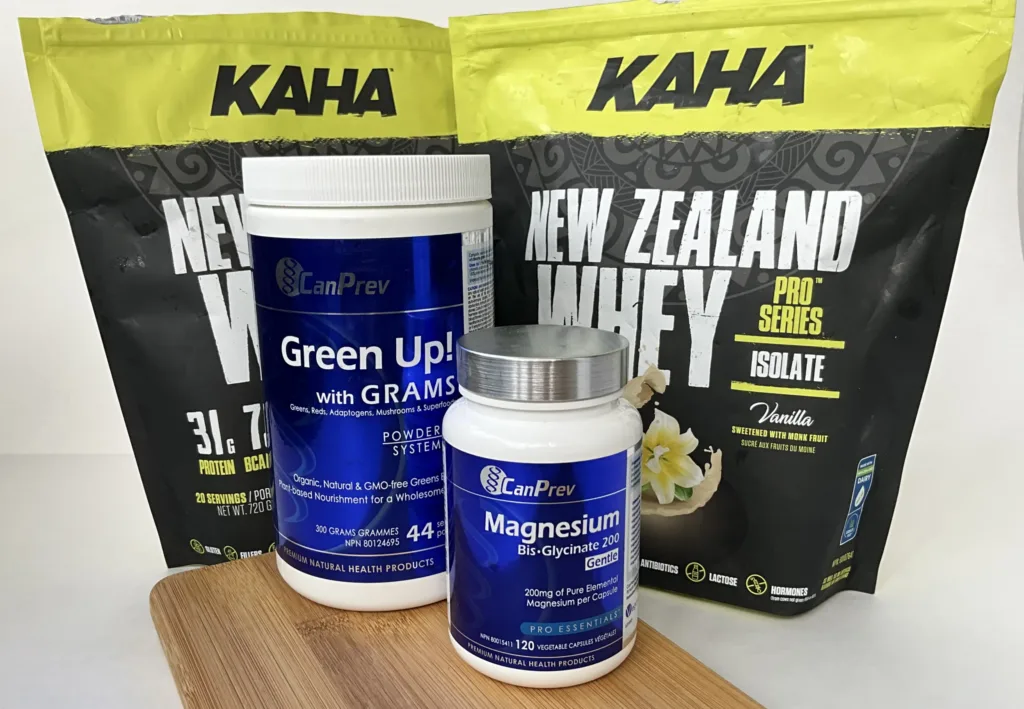
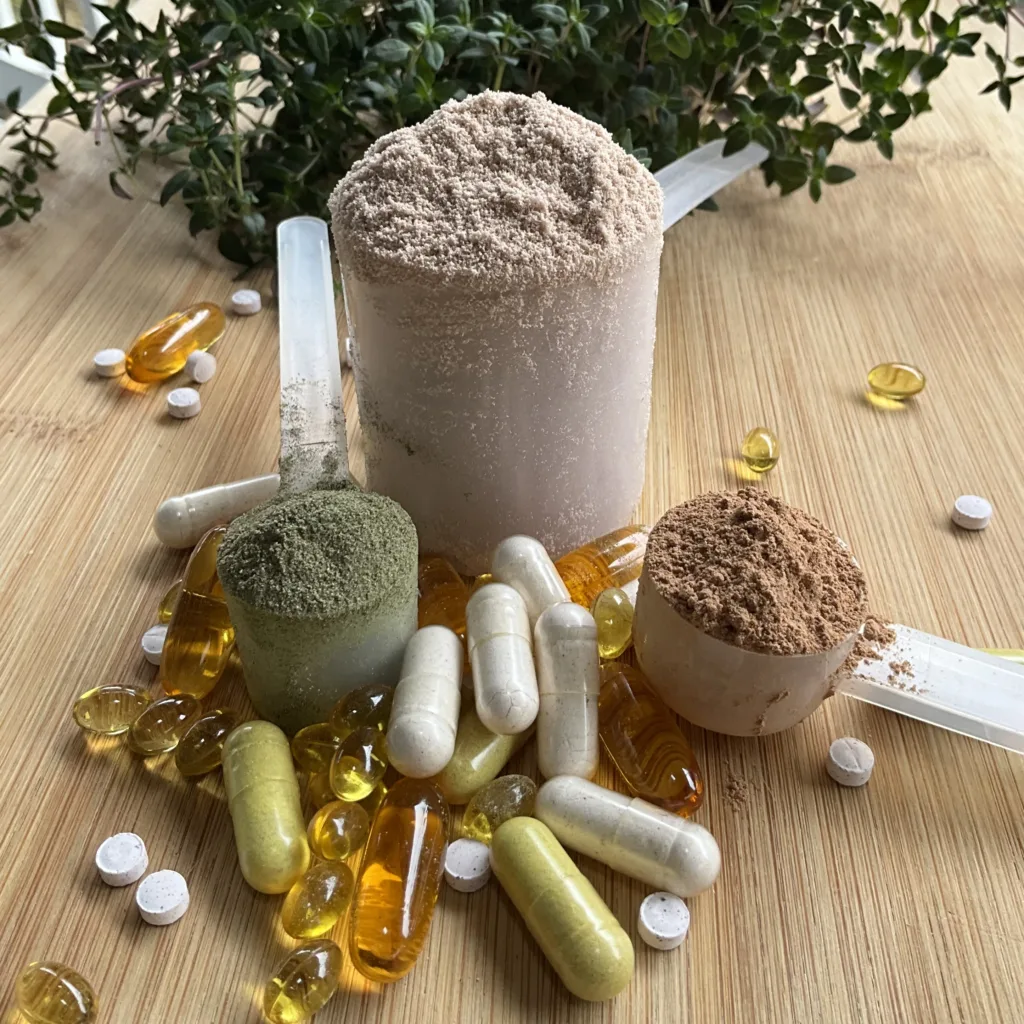
Magnesium bis-glycinate – is known to help with muscle function and relaxation. We suggest taking 200 mg 1-2 hours before bed.
Glutamine – shown to support gut health and therefore immunity by strengthening the intestinal wall. High-performance athletes can often compromise their immune systems due to high amounts of stress on their bodies. Glutamine is a key amino acid for muscle protein synthesis. Take post-workout.
Omega 3 – essential fatty acids are used to support cell membranes and reduce inflammation throughout the body. They have also been shown to support a variety of body systems such as the nervous system. Look for sustainably sourced fish oil with a DHA and EPA designation.
Ashwagandha – has been researched extensively for its use in lowering cortisol levels. Although cortisol is important for a few hours post-exercise (it aids in muscle recovery), high amounts towards the end of your day can have detrimental effects on your sleep. We recommend taking this late afternoon.
Greens powder – helps cover your micronutrient bases. We recommend CanPrev‘s greens. This can be added to smoothies or mixed in juice or water. This may help with energy levels as it contains ginseng and Macca, medicinal mushrooms such as cordyceps and a healthy dose of vitamins and minerals.
Grass-fed whey protein powder – is a great way to hit protein intake targets. I recommend Kaha Nutrition’s Whey Isolate as it has no added fillers or artificial sweeteners and is sourced from sustainable and ethically raised cows.
Vitamin D – is essential for immune health. During winter months sunshine is hard to come by; even in summer 80% of your body has to be exposed for up to half an hour to receive the correct dosage. Therefore supplementation of 3000-6000 IU a day is recommended.
The holiday season is a great time to share, love, eat and loosen the reigns but it can consequently contribute a lot more waste and pollution to an already overloaded system. The same applies to the human body, your health concerns may become exacerbated during a month-long stint of falling off track or you may find issues with inflammation or digestive discomfort you’d never experienced before. The intent of this article, therefore, is to help you take a more considered approach to the holidays while still letting you feel the joy, warmth and gratitude of this beautiful time of year. We believe the best way to guide our clients to their health goals is to strive towards a harmonious state of being so the mind, body and spirit are aligned and in turn, so are your bodily systems. To do this we offer recommendations in mindfulness, nutrition, supplementation, movement and lifestyle practices. This in-depth article is our seasonal gift to you, it offers the same set of recommendations but with specificities for the holidays to help you feel harmonious over the festive period.
Happy harmonious holidays!

Sign up for our newsletter to receive the latest articles to guide your journey to a harmonious mind, body and spirit.
Book a free consultation call to discuss your specific concerns or goals. We would love to help get you on the right path for finding a lifestyle thats more harmonious in mind, body and spirit.
Follow along with us @sunadaliving